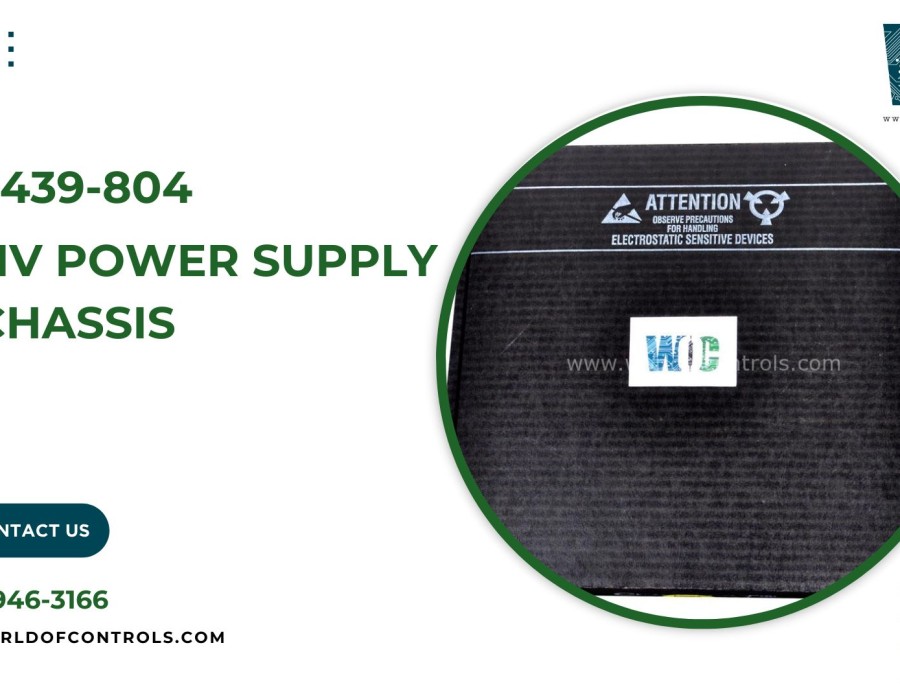Introduction
As turbine technology evolves to meet the demands of a more electrified and connected world, the infrastructure supporting these systems must keep pace. Among the most critical components in turbine control environments is the high voltage (HV) power supply chassis—a robust unit designed to deliver stable, regulated power to sensitive and mission-critical electronics. Woodward, a recognized leader in control system technologies, is at the forefront of this evolution, delivering advanced HV power supply solutions engineered for the challenges of modern turbine applications.
Why HV Power Supply Chassis Matter
In both industrial and aero-derivative turbine systems, the margin for error is razor-thin. From fuel control to valve actuation and safety shutdowns, electronic subsystems are responsible for keeping operations running efficiently and safely. These systems depend on a consistent and clean supply of high voltage power.
The HV power supply chassis serves as the backbone of these operations, providing regulated DC voltage to control platforms, actuator drivers, and protection modules. Its performance directly impacts the responsiveness, reliability, and longevity of the overall control system. A well-engineered chassis ensures minimal electrical noise, tight voltage tolerances, and built-in protection against overvoltage, overheating, and transient spikes.
Woodward’s Approach to Power Supply Design
Woodward’s HV power supply chassis is designed with one goal in mind: to support high-performance turbine applications in the most demanding environments. These systems are often deployed in harsh industrial settings, from remote oil platforms to high-vibration turbine enclosures. Woodward’s solution offers:
- Rugged construction built to handle temperature extremes, shock, and vibration.
- High output stability to support sensitive digital control electronics.
- Scalable, modular architecture that makes maintenance and upgrades efficient.
By offering intelligent power infrastructure that aligns with the requirements of turbine control systems, Woodward empowers OEMs and operators to reduce downtime, enhance reliability, and meet increasingly strict performance and emissions standards.
Applications in the Turbine Industry
Woodward’s HV power supply chassis is particularly vital in gas turbine environments, where it supports subsystems such as:
- Fuel metering and combustion control
- Variable stator vane and bleed valve actuators
- Real-time monitoring and protection circuits
These components require precise voltage control to function accurately, especially during rapid startup, shutdown, and load transitions. The power supply chassis provides this consistency, even under dynamic operating conditions.
In power generation and energy infrastructure, reliability is critical. A stable HV power chassis ensures continuous operation of electronic control systems, enabling turbines to operate at peak efficiency with minimal interruptions. It also plays a key role in the transition toward smarter grids and predictive maintenance, feeding power to sensors and processors that monitor turbine health in real-time.
Advanced Features for Future Demands
Woodward integrates several advanced features into its HV power supply design, including:
- Electromagnetic interference (EMI) suppression, ensuring system compatibility and stability.
- Integrated diagnostics that monitor voltage levels, thermal load, and hardware integrity.
- Redundant power path options to support mission-critical applications where uptime is essential.
- Efficient thermal management, including internal airflow control and advanced heat dissipation materials.
These features position Woodward’s HV chassis for a key role in next-generation turbine systems, which demand greater intelligence, higher efficiency, and remote monitoring capabilities.
Engineering for Tomorrow
As turbines become more digitized and software-driven, power supply systems must do more than deliver voltage—they must enable communication, self-diagnosis, and integration with advanced control platforms. Woodward’s HV power supply chassis meets these needs head-on, supporting platforms such as MicroNet™, Atlas™, and other smart controllers used in industrial and energy applications.
By building in support for future firmware updates and smart connectivity, Woodward ensures its systems are not only compatible with today’s turbine demands but also adaptable to tomorrow’s innovations.
Conclusion
In an industry where reliability, performance, and foresight are non-negotiable, Woodward’s HV power supply chassis stands as a cornerstone of advanced turbine control. With a proven track record in delivering stable power under extreme conditions, it’s a solution designed not just for current needs—but for the future of energy and propulsion. Through smart engineering and industry insight, Woodward continues to power the systems that move the world.





Comments